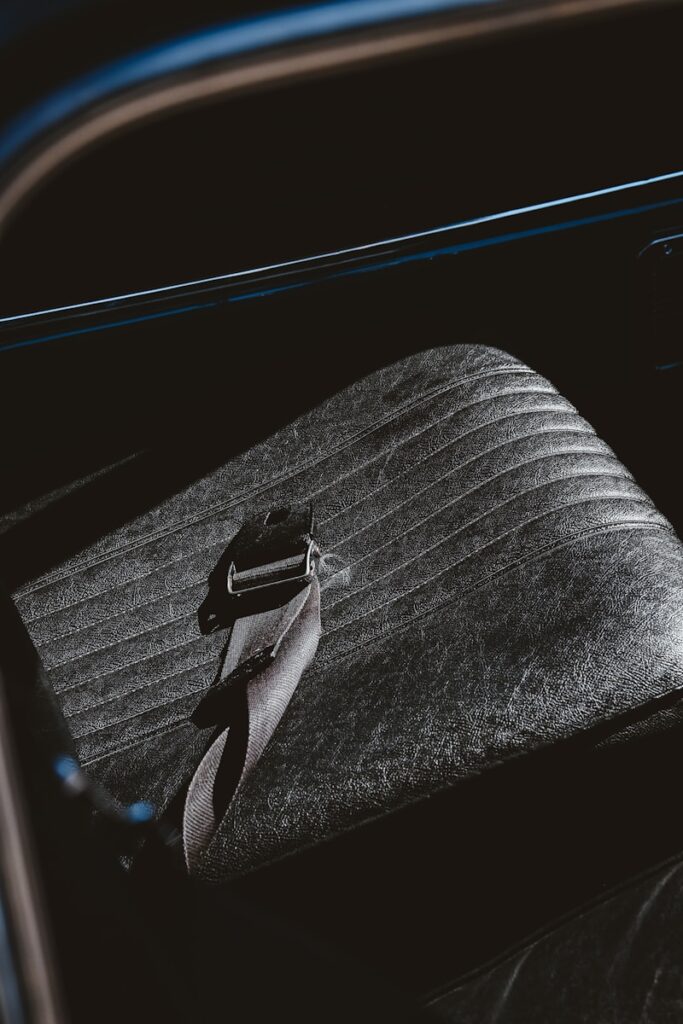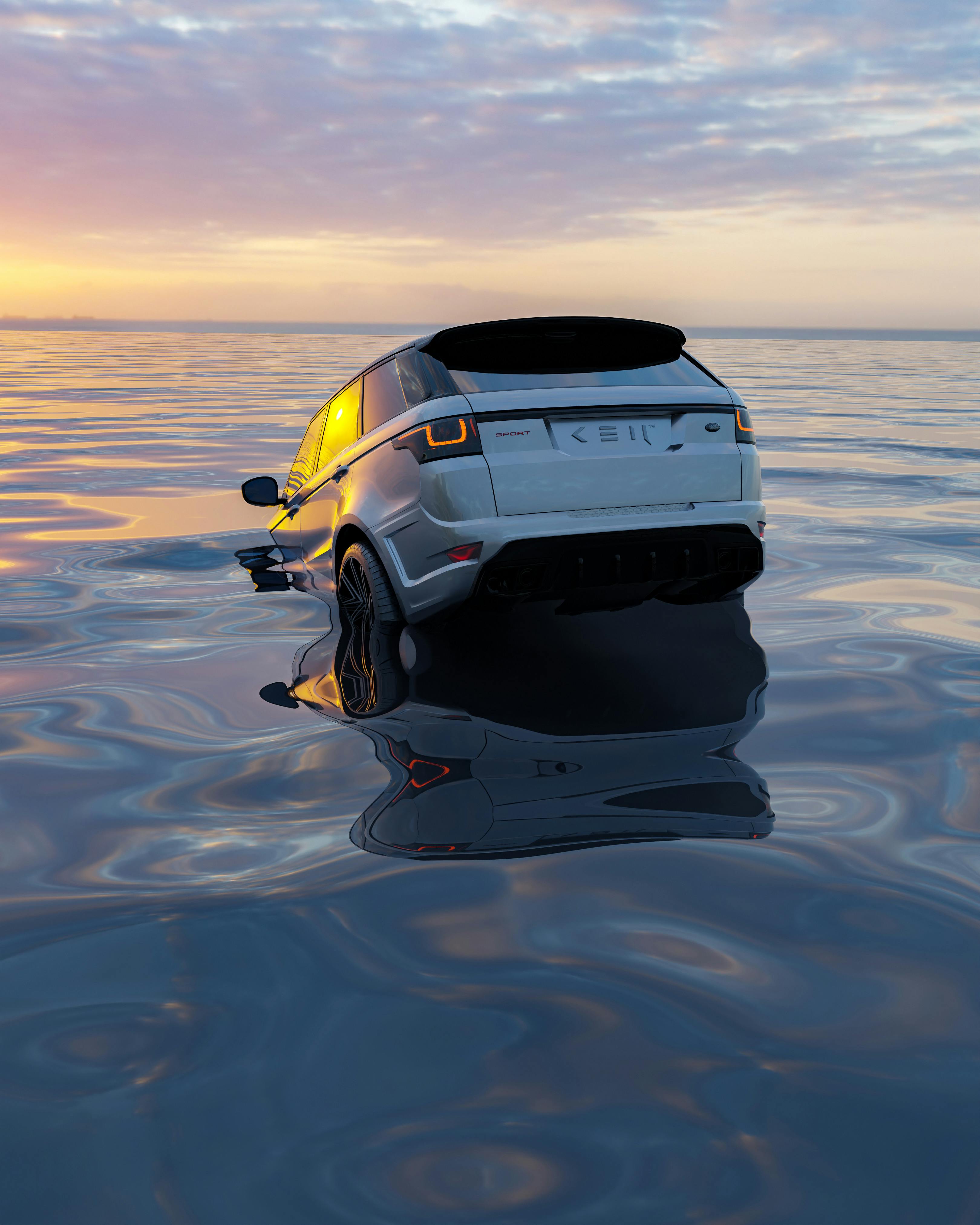
The thought of your car plunging into water is enough to send shivers down anyone’s spine, yet it’s a terrifying scenario that happens far more often than we’d like to imagine. Whether it’s a sudden skid into a lake, an unexpected flash flood, or driving into water deeper than anticipated, finding yourself trapped in a submerged vehicle is a critical emergency. Every year, hundreds of people in the USA die in submerged cars, making up a significant portion of drowning deaths. This isn’t just a movie plot; it’s a real-world threat that demands our attention and preparation.
But here’s the empowering truth: you can survive this. The key isn’t superhuman strength or luck, but rather knowing a few simple, actionable steps that can dramatically increase your chances of escape. As one expert puts it, “survival is 98% practice.” The other 2%? Having the right gear. This article isn’t just about what to do; it’s about giving you a clear, concise, and confidence-building roadmap to navigate those terrifying first seconds.
From bracing for impact to choosing the right escape route and ensuring your loved ones are safe, we’re diving deep into the practical hacks that can turn a desperate situation into a successful escape. Consider this your ultimate guide to staying calm, acting fast, and getting out safely when every second counts. Let’s make sure you’re ready, just in case.

1. **Hack #1: Stay Calm and Brace for Impact**When your car skids or crashes into water, the immediate shock can be overwhelming. Your heart races, adrenaline surges, and panic threatens to take over. Yet, the first and most crucial hack for survival isn’t physical; it’s mental. Experts emphasize the vital importance of staying calm, taking a deep breath, and telling yourself, “I can do this.” Panicking is a significant mistake, as it wastes precious energy and air, clouding your ability to think clearly in a situation where every second counts. Staying focused is your best defense.
As the vehicle hits the water, bracing for impact is your immediate physical response. Hold the steering wheel firmly at the “10 and 2” position. This particular grip helps to protect you if the airbags deploy, preventing potential injuries. A driver who experienced this firsthand noted that staying calm helped them think clearly, allowing them to initiate the escape plan effectively. The mental fortitude to remain composed under extreme stress is what truly kicks off a successful rescue.
Remember, your car’s airbags might pop out upon impact with the water, adding to the initial shock. The sudden jolt, coupled with cold water rushing in, can be disorienting. However, maintaining your composure through these initial moments allows you to process the next steps methodically. It’s the difference between freezing and acting, between survival and succumbing to the situation. Train your mind to be your strongest asset.
2. **Hack #2: Unbuckle Your Seatbelt Immediately**Once the initial impact is over and you’ve taken that critical deep breath, your very next action must be to free yourself from your seatbelt. This step is non-negotiable and takes mere seconds. You cannot effectively escape a sinking vehicle if you are still strapped in. The urgency here is paramount, as demonstrated by the simple S-W-O plan: Seatbelt, Window, Out.
While it sounds straightforward, unbuckling your seatbelt can be surprisingly difficult in a disoriented state. The car might not be level, and your mobility could be compromised. If the seatbelt mechanism is jammed or stuck, don’t waste precious time fumbling. Tug hard on the belt to see if it frees itself. If it remains stubbornly in place, you may need to use a tool, such as a seatbelt cutter, which is designed for exactly this purpose.
Keeping a seatbelt cutter readily accessible is a small investment that can have a life-saving return. Some car escape tools combine a glass-breaking hammer with a seatbelt cutter, offering a dual-purpose solution. Regardless of how you achieve it, freeing yourself from the seatbelt must be accomplished with lightning speed. It’s the first physical barrier to your escape, and overcoming it swiftly sets the stage for everything that follows.

3. **Hack #3: Prioritize Windows: Roll Down or Break**The golden rule for escaping a sinking car is clear: forget the doors and go straight for the windows. As soon as you’ve unbuckled your seatbelt, your next immediate action is to open a window. Electric windows often continue to function for a few minutes after a car hits water, so do not hesitate. Roll it down right away to create your primary exit route.
If, for any reason, the electric windows fail to open—perhaps due to electrical system damage or simply running out of that precious 30-60 second window of power—you must be prepared to break a window. Aim for a side window, specifically one made of tempered glass. Windshields are typically laminated glass, which is incredibly difficult, if not impossible, to break with improvised tools or bare hands in an emergency.
To break a tempered glass window, a specialized tool like a glass-breaking hammer is ideal. If you don’t have one, the metal prongs of your car’s headrest can be removed and used as an effective improvised tool. Aim for the corner of the side window, as this is typically the weakest point. Do not aim for the center; focus your force on the edge or lower corner for the best chance of shattering the glass quickly and effectively. Creating this opening is your fastest, most reliable way out.
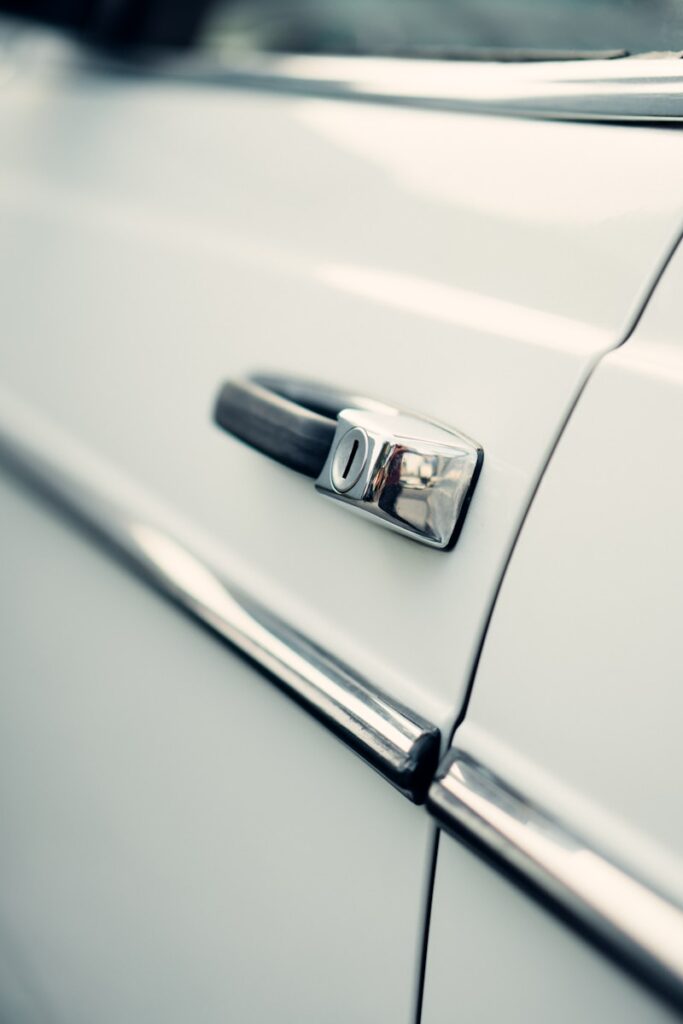
4. **Hack #4: Escape Quickly and Don’t Open Doors**With your seatbelt off and a window opened or broken, the next step is to get out of the car as fast as possible. Climb through the open window and push off the vehicle to move upward towards the surface. Speed is your ally here; every second the car remains afloat is a gift you must utilize.
Crucially, under no circumstances should you attempt to open the car doors. This is one of the biggest mistakes people make in a submerged vehicle. The pressure differential between the water outside and the air (or partial air pocket) inside makes the doors incredibly difficult, if not impossible, to open when even partially submerged. Trying to muscle a door open is a wasted effort and a critical loss of precious time.
Furthermore, if you somehow manage to force a door open, it will have devastating consequences. Water will rush into the car much faster, accelerating its sinking dramatically. In one study, a car that might have floated for 2.5 minutes sank in just 30 seconds after a door was opened. Stick to the window escape method; it is faster, safer, and prevents the car from turning into a deathtrap by flooding instantly.

5. **Hack #5: Prioritize Passengers, Especially Kids**If you have passengers, especially children, your escape strategy needs an added layer of prioritization. After freeing yourself, your immediate focus shifts to helping them. Begin by unbuckling their seatbelts. For children, the recommended order is to help them out first, starting with the oldest. An older child may be able to assist younger siblings, creating a more efficient escape chain.
Once their seatbelts are off, guide them towards the open window. If possible, break a window closest to the child to make their exit easier. While you could pull a child across seats to your window, breaking their nearest window is often faster and less cumbersome in a cramped, disorienting environment. For very young children or babies, you may need to swim out through your window first, then reach back in to pull them out.
For children who can swim, experts suggest pushing them out first, allowing them to surface while you follow. The underlying principle is to prioritize human life over all else. While pets are family members, survival experts advise prioritizing human occupants. Every inch of space away from the sinking car helps your escape, so work quickly and decisively to get all occupants out safely.

6. **Hack #6: Equip Your Car with Essential Escape Tools**While knowing the steps is paramount, having the right tools can make all the difference in a water emergency. This isn’t about being a doomsday prepper; it’s about practical preparedness for an unlikely but potentially fatal event. The two most vital tools are a glass-breaking hammer and a seatbelt cutter. These aren’t expensive or complicated, but they are indispensable when seconds count.
A glass-breaking hammer, often costing between $5 and $15, can shatter side windows made of tempered glass, providing a swift escape route if electric windows fail. A seatbelt cutter, similarly priced, allows you to quickly sever a jammed seatbelt, which can be surprisingly difficult to unbuckle under stress or if the car is at an odd angle. Many of these tools are combined into a single, compact device, like the ResQme tool, which is highly recommended by survival experts.
Don’t underestimate the tools already built into your car either. Most front seat headrests have metal prongs that can be removed and used to break a side window if no other tool is available. This is a free, readily available alternative that can save your life. Investing a small amount in a dedicated car escape tool, or at least knowing how to utilize your headrest, is a small price for immense peace of mind. It’s the smart, Lifehacker way to approach emergency readiness.
7. **Hack #7: Unpacking Car Dynamics in Water: The Science of Sinking**Understanding precisely what happens when your car enters water is more than just academic knowledge; it’s a crucial hack for survival. When your vehicle plunges into water deep enough to fully submerge, a relentless clock begins ticking. Expert Sean Gold, a professional emergency manager, stresses that “You have a crucial window to act—often less than a minute.” Knowing the distinct phases a car goes through can help you anticipate the challenges and act decisively within that critical timeframe. This isn’t just about reacting; it’s about predicting.
Researchers have identified three primary phases a car experiences in water, each with its own implications for escape. Initially, there’s the ‘Floating’ phase, which can last anywhere from about 15 to 60 seconds. During this brief period, the car remains on the surface, but water immediately begins to seep in through vents and seals. The vehicle will typically tip forward due to the heavy engine, accelerating the sinking process. Joe Bassett, a survival expert, notes that “Electric vehicles are heavier and often sink faster,” a vital piece of information for EV owners.
Following the float is the ‘Sinking’ phase, lasting roughly 15 seconds to 2 minutes, where the car starts to go under but isn’t yet completely filled with water. Your chances of escape are still present here, but it becomes increasingly difficult with each passing second. Crucially, the car’s electrical system, including your power windows, usually only functions during the ‘Floating’ stage. Bassett explicitly states, “Once the car is in the water, you have about 30 to 60 seconds of electricity,” underscoring the urgency of rolling down windows immediately. If the battery is vulnerable, power could cut even faster.
Finally, the ‘Submerged’ phase means the car is completely underwater and full of water. At this point, escape becomes significantly harder, and while not impossible, your odds of survival diminish drastically. The goal is always to avoid reaching this stage. Recognizing these dynamics empowers you to grasp the extreme time sensitivity of the situation, reinforce the importance of immediate action, and understand why the early steps—like getting windows down—are not just suggestions but life-or-death imperatives. It’s about leveraging every precious second before the physics of submersion overwhelm your options.

8. **Hack #8: Glass Types Exposed: Know Your Windows for a Swift Exit**When seconds are ticking, fumbling with the wrong window type can cost you your life. It’s a surprising but crucial detail: not all car windows are created equal, especially when you need to break them for escape. The golden rule for exiting a sinking car is to “Forget the door. Go for the window.” But simply knowing *that* isn’t enough; you need to know *which* window and *how* to break it effectively, turning potential panic into precise action.
The key distinction lies between tempered glass and laminated glass. Most rear side windows are made of tempered glass, designed to shatter into small, relatively harmless pieces when broken. This is your target. Windshields, and often some front side windows, are typically laminated glass—two layers of glass with a plastic interlayer. This construction makes them incredibly difficult, if not impossible, to break in an emergency, even with specialized tools. As Sean Gold, founder of TruePrepper, highlights, “Tempered glass shatters easily with spring-loaded glass breakers or tungsten-tipped breakers. Laminate doesn’t.”
So, how do you identify your car’s glass types *before* an emergency strikes? Gold suggests checking for a small label or etching on the window that says “Tempered” or “Laminated.” If you can’t find it, a quick online search for your car’s make and model should provide the information. Once you’ve identified the tempered-glass windows, Bassett recommends using a Sharpie to put a small, discreet mark in the corner. This simple hack ensures that in a disoriented state, you won’t waste critical seconds trying to break an impenetrable window.
When it comes to breaking tempered glass, aim for the lower corner or edge, as Gold advises, “Tempered glass breaks easiest at the lower corner or edge. Avoid the center.” A specialized glass-breaking tool is ideal, but if you don’t have one, the metal posts of your front seat headrests can be removed and used as an improvised tool. This method “can take a lot of force and room to swing, which you may not have,” Gold cautions, emphasizing the superiority of a dedicated tool. Knowing these glass characteristics and marking your escape windows transforms a desperate scramble into a strategic egress.
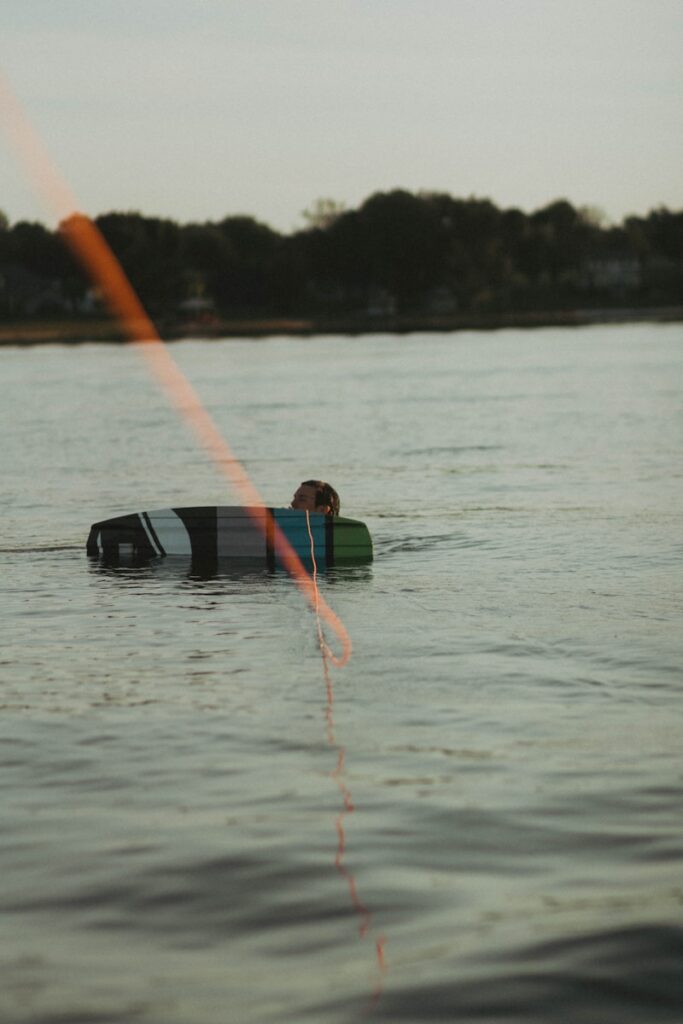
9. **Hack #9: Strategic Tool Placement: Always Within Arm’s Reach**Having the right tools is only half the battle; the other, equally critical half is ensuring they are immediately accessible when a water emergency strikes. A survival expert, Joe Bassett, perfectly encapsulates this truth: “It won’t help you if it’s in the trunk.” This isn’t just common sense; it’s a foundational principle of emergency preparedness. Your car escape tool needs to be where you can grab it in seconds, even if you’re disoriented, strapped in, or in the dark.
The ideal locations for your essential glass-breaking hammer and seatbelt cutter are the glove box, the center console, or even attached to your keychain. Many modern car escape tools are compact and designed for exactly this purpose. Bassett, for instance, recommends the ResQme tool, which costs less than $10, stating, “I’ve got three in different spots in my car.” This multi-tool approach ensures redundancy, so if one spot is inaccessible, another is within reach. His daughter even carries one on her keychain, a testament to its portability and the importance of personal readiness.
Beyond dedicated tools, remember the free, built-in alternatives your car already possesses: the metal prongs of your front seat headrests. Most front seat headrests have metal posts that are designed to be removed and can be used to break a side window if no other tool is available. This is a crucial, no-cost backup. Knowing how to quickly remove your headrest and having practiced this motion can shave off precious seconds. The key is to check if your headrests are removable and understand how to deploy them effectively before you ever need to.
Ultimately, strategic tool placement is about eliminating friction in a high-stress scenario. It transforms a desperate search into a practiced reflex. When your car is rapidly filling with water, you don’t have time to rummage or hesitate. Keeping these life-saving devices within an arm’s length, or even on your person, is a small investment of thought and a minimal cost for a potentially monumental return: your life. It’s the ultimate Lifehacker move for car safety.
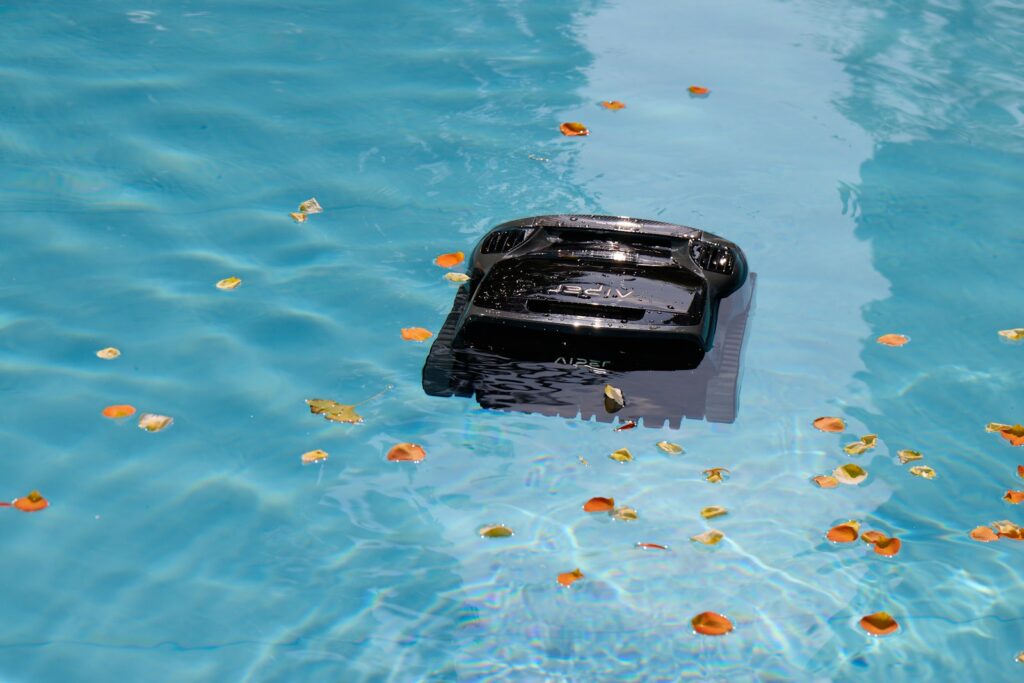
10. **Hack #10: Avoiding Critical Mistakes: What NOT to Do When Every Second Counts**In the chaotic, terrifying moments of a car plunging into water, panic is your gravest enemy, and common errors can quickly turn a bad situation into a fatal one. Survival experts Joe Bassett and Sean Gold repeatedly emphasize that many people make critical mistakes born of instinct or lack of knowledge, mistakes that consume precious time and energy. Knowing what *not* to do is just as vital as knowing what *to* do, empowering you to override unhelpful instincts with life-saving actions.
One of the most dangerous, yet common, errors is attempting to open the car doors. This is a monumental mistake due to the immense pressure differential between the water outside and the car’s interior. As Gold states, “The pressure differential between air and water makes the car doors difficult or impossible to open when even partially submerged.” Bassett adds, “A big mistake people make is trying to open a door before the car is fully submerged. It simply won’t work, and you’re wasting precious time.” Furthermore, if you *do* manage to force a door open, water will rush in much faster, accelerating the car’s sinking dramatically—a car that might have floated for 2.5 minutes could sink in just 30 seconds.
Another critical misstep is panicking or freezing. While natural, panic wastes precious air and energy, clouding your judgment when clear thinking is paramount. Gold advises against “Grabbing a purse, laptop or phone,” reminding us, “They’re replaceable—you’re not.” In an emergency, material possessions are irrelevant; focus solely on human life. Similarly, calling 911 *before* you’re out of the car is a critical waste of seconds. The priority is self-rescue; contact emergency services only once you’re safely out of immediate danger.
Underestimating the difficulty of unbuckling a seatbelt under stress or assuming children will “just know” what to do are also serious errors. As Gold notes, “Cutting it may be faster and easier” if a seatbelt is jammed. For children, clear, pre-discussed instructions and practice are essential. Finally, the cinematic fantasy of punching or kicking out a window is just that—a fantasy. Bassett firmly states, “It just won’t work. There’s not enough room for you to get enough range of motion to swing your fist or even a hammer.” These avoidable errors highlight the need for mental preparation and a clear, practiced plan.
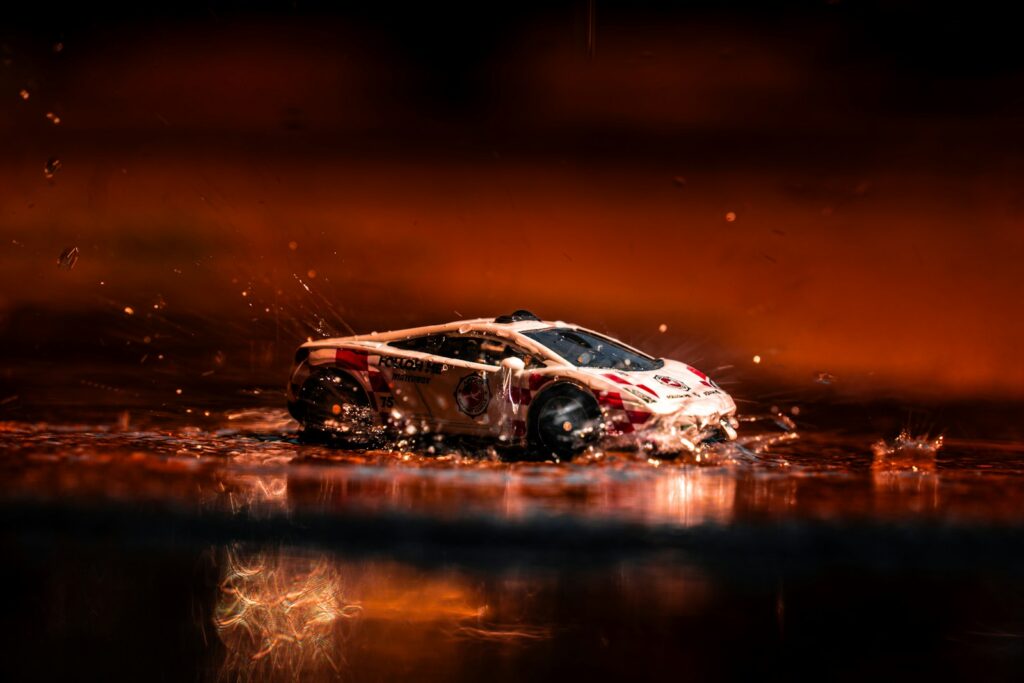
11. **Hack #11: Proactive Practice: Building Muscle Memory for Life-Saving Reflexes**The difference between survival and tragedy in a car-in-water scenario often boils down to preparation. As survival expert Joe Bassett wisely proclaims, “survival is 98% practice.” This powerful truth underscores that knowing the steps isn’t enough; you must engrain them into your muscle memory through proactive practice. You wouldn’t expect to run a marathon without training, and you shouldn’t expect to execute a complex escape under extreme stress without rehearsal.
Practicing doesn’t mean submerging your car in a lake (please don’t!). Instead, it involves dry runs that simulate the motions. Bassett suggests routinely practicing how fast you can find and grab your escape tool, unbuckle your seatbelt, and then simulate breaking glass by lightly hitting a window with your elbow. From there, he practices rolling down the window and climbing out. This mental and physical rehearsal primes your body and mind to react efficiently, even when panic threatens to seize control. The goal is to make these life-saving actions automatic, transforming them into reflexes rather than conscious, hesitant decisions.
Another crucial aspect of proactive practice involves your passengers, especially children. Bassett recommends playing the “What if…” game with your kids. “Talk to your kids about what to do,” he advises. “Practice with them so they know what to expect. Don’t obsess, but keep it light and educational.” Teaching them to unbuckle themselves, to follow your instructions, and to know *their* escape window can dramatically improve the chances of everyone getting out safely. It empowers them to be active participants in their own survival rather than passive victims.
This kind of preparedness also extends to knowing your car. Understanding which windows are tempered glass and marking them, as discussed earlier, is part of this proactive approach. Regularly checking the accessibility of your tools and ensuring your headrests are easily removable reinforces this readiness. Building muscle memory through regular, albeit simulated, practice ensures that when the unexpected happens, you’re not relying on luck, but on ingrained, life-saving habits. It’s the ultimate hack for controlling the controllable in an uncontrollable situation.

12. **Hack #12: Post-Escape Actions: Surviving the Aftermath and Seeking Safety**Escaping a sinking car is an incredible feat of survival, but the danger doesn’t cease the moment you clear the vehicle. The immediate aftermath presents its own set of critical actions you must take to ensure long-term safety and well-being. Thinking ahead to these post-escape steps is a proactive hack that completes your survival strategy, ensuring you navigate not just the submersion, but also the subsequent challenges.
As soon as you’re out of the car and underwater, your first priority is to orient yourself and reach the surface. A simple yet highly effective hack is to “Follow the bubbles.” They will naturally guide you upwards, helping you to find the surface even if you’re disoriented or in murky water. Once at the surface, immediately swim away from the sinking vehicle. The car can create suction as it goes down, potentially pulling you back into the dangerous vortex. Prioritize getting clear of the immediate vicinity and towards the closest safe shore.
Once you’re safely out of the water and on stable ground, the next crucial steps involve seeking help and assessing your condition. “Call for help once you’re safely out of the water,” advises experts, emphasizing that the phone is for *after* escape. Your adrenaline will likely be surging, masking pain, so it’s vital to “Check for injuries and signs of shock.” Even if you feel fine, impacts from the accident or cuts from broken glass might not be immediately apparent. Seek medical attention as soon as possible, as hypothermia is also a significant risk, even in seemingly warm water.
Finally, getting warm as soon as possible is paramount. Wet clothes rapidly pull heat from your body, and hypothermia can set in quickly, impairing your judgment and physical capabilities. Find shelter, remove wet clothing, and wrap yourself in anything dry you can find. These post-escape actions are the final, yet integral, components of your survival plan. They ensure that your successful escape from the car leads to a successful recovery, reinforcing the Lifehacker ethos of preparedness for every stage of a challenge.
**Conclusion: Beyond the Hacks – Cultivating a Prepared Mindset**
We’ve delved deep into twelve critical hacks, from staying calm to strategically placing your tools and understanding the unforgiving dynamics of water. The journey through these steps might seem daunting, but remember, each one is a simple, actionable piece of a larger, empowering puzzle. The underlying message isn’t to live in fear of a freak accident, but to cultivate a prepared mindset – one that transforms potential panic into precise action. As the survival experts remind us, “survival is 98% practice.”
By internalizing these hacks, by perhaps even buying that sub-$10 car escape tool and practicing its use, you’re not just learning a skill; you’re building confidence. You’re taking control of a terrifying ‘what if’ scenario and replacing it with a ‘this is what I’ll do.’ So, take a deep breath, review these steps, share them with your loved ones, and then rest easy knowing you’ve armed yourself with the ultimate lifehack: preparedness. Because when every second counts, knowing what to do is the difference between hoping for a rescue and enacting your own. Stay safe out there, and stay prepared!

